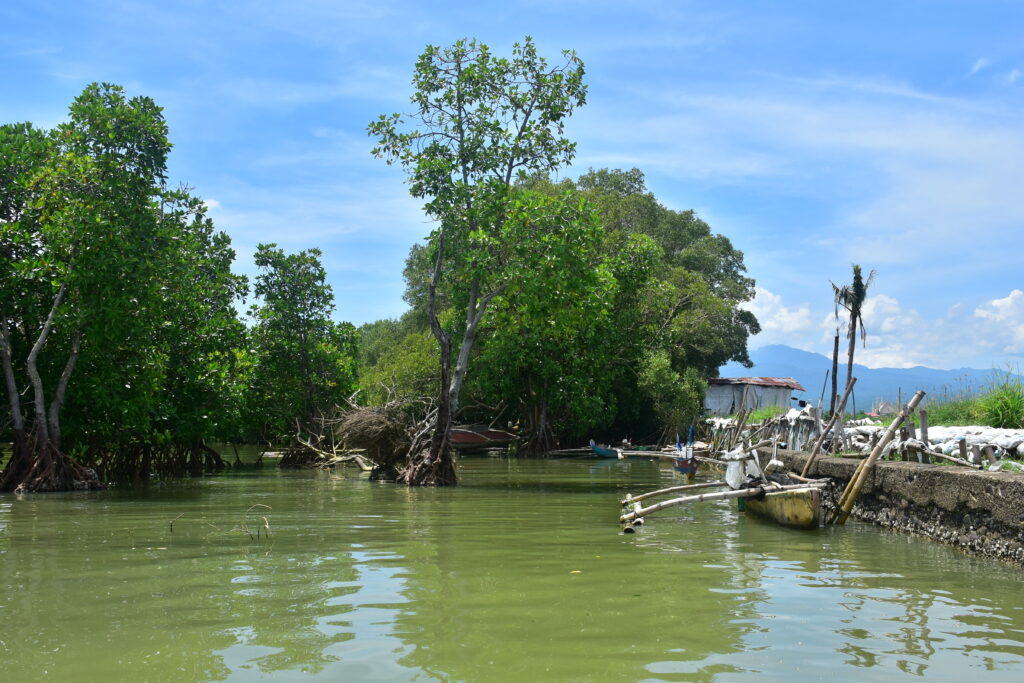
Conservation group to PH gov’t: Revert AUU fishponds to mangroves

Wetlands International Philippines calls on the Philippine government to fast-track the reversion of abandoned, undeveloped, and underutilized fishponds back to mangroves.
The environmental group also called on the Bureau of Fisheries and Aquatic Resources to cancel and transfer all fishpond lease agreements for abandoned, undeveloped, and underutilized ponds back to the Department of Environment and Natural Resources.
“The Department of Environment and Natural Resources originally had jurisdiction over many of the mangrove areas that were leased to the Bureau of Fisheries and Aquatic Resources under the Department of Agriculture for aquaculture production,” said Dr. Annadel Cabanban, Country Manager of Wetlands International Philippines.
“However, many of those fishponds have been idle or largely underutilized for over 5 years. Under the Philippine Fisheries Code, as amended, the Bureau is required to return the lease agreements for aquaculture areas of unutilized fishponds back to the Department of Environment and Natural Resources, so that the areas can be reverted to their original mangrove state.”
Section 49 of Republic Act No. 8550 gives the DENR, in coordination with the Department of Agriculture, local government units, other concerned agencies and FARMCs to identify AUU fishponds covered by FLAs to be reverted to their original mangrove state.
Meanwhile, Section 99 of RA 10654 likewise prohibits any person from converting mangroves into fishponds or for any other purpose.
“We are already in a race against climate change. If we lose any more mangroves, the more vulnerable our country will be to flooding, erosion, and storm surges,” said Cabanban.
New threat to mangrove restoration
Cabanban added that a new threat to mangrove restoration in the country is the new proposal of the DA-BFAR to use AUU ponds as salt farms.
“Mangroves need brackish water and can hardly survive or grow conditions that are too high in salinity. So salt farming and mangrove survival are unlikely to co-exist. Some studies say that mangrove restoration can still happen in former salt bed areas, but it is costly and tedious. We thus urge the DA-BFAR to thoroughly reconsider and revise its draft FAO 197-2 as it may exacerbate the further degradation of mangroves,” said Cabanban.
According to Cabanban, excessive water salinity can stunt the mangrove’s growth, reduce biomass, and impair photosynthesis. It can also interfere with the way the mangrove’s roots absorb water and nutrition from the ground, which makes it difficult for the mangroves to survive.
Alternatives to ensure sustainable fisheries and mangrove restoration
Instead of using the AUU fishponds for salt farming, Wetlands International Philippines recommends implementing the Associated Mangrove Aquaculture (AMA) approach as a mangrove-friendly aquaculture strategy.
“The Associated Mangrove Aquaculture is both mangrove-friendly and socio-economically viable. It adapts the restoration of mangroves along waterways and a win-win situation for sustainable use,” said Cabanban.
AMA restores mangrove greenbelts in the estuary along inland waterways and protects adjoining fishponds. It uses mangroves’ ability to enhance biodiversity in an area to increase aquaculture production and is a more sustainable alternative to the silvo-fishery systems, which are being practiced by some fish farms in the Philippines, according to Cabanban.
Wetlands International Philippines is working to pilot the AMA approach in the Philippines as a means of reconciling the need to restore mangroves and ensure ample fisheries supply.
Another opportunity the Philippine government should consider is developing robust, high quality blue carbon projects.
“This presents a timely opportunity to secure sustainable financing, including access to carbon markets, that conserves critical ecosystems while enhancing livelihoods and resilience. Policy reforms, institutional coordination, and local governance support are vital for project success,” said Cabanban.
“Mangrove restoration in fishponds can be a strategy for increased blue carbon investments. So we recommend the DENR, DA-BFAR, other related agencies, and our policymakers to come up with the implementing rules and regulations for increased blue carbon investments in the Philippines,” said Cabanban.
She suggested encouraging corporate social responsibility programs and public-private partnerships focused on mangrove and seagrass restoration, ecotourism, blue carbon ventures, among others.
“We are willing to work with all involved agencies, groups, and communities for solutions that would ensure both food security and mangrove conservation and restoration,” said Cabanban.
